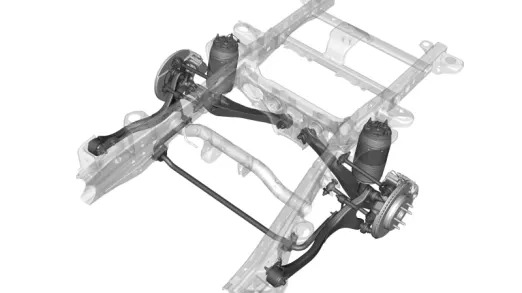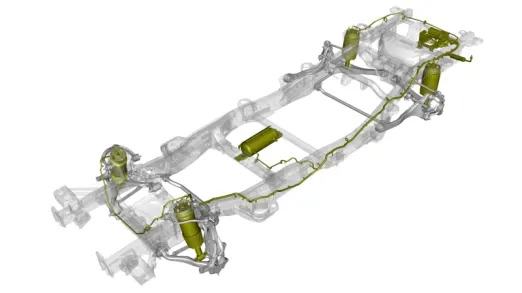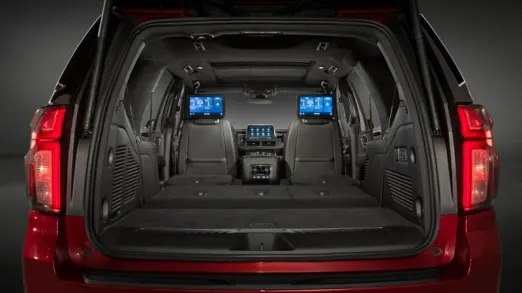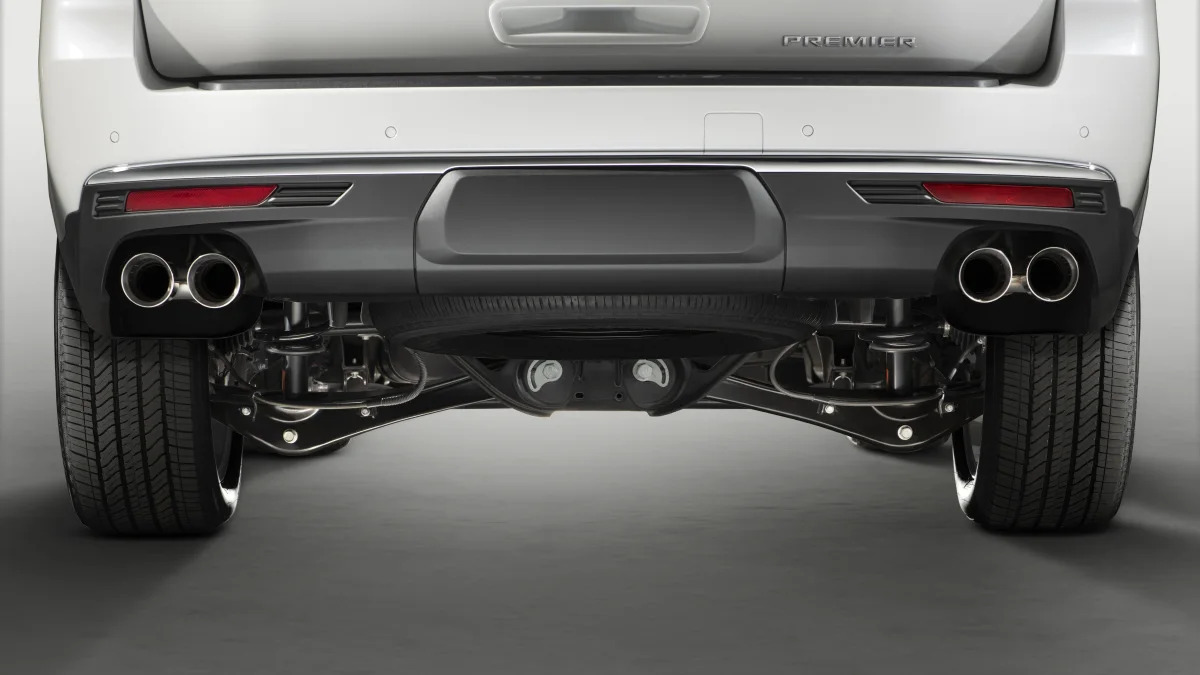The 2021 Chevrolet Tahoe and Suburban are out, and they’re hiding big news underneath the new sheetmetal. GM’s full-size trucks officially made the switch from a live rear axle to an independent rear suspension design. This switch is massively important, and it enables much of the improvement we’ve already been able to glean from spending a bit of time with the new SUVs.
When Ford made the change from a live rear axle to an independent rear suspension in the Mustang, it resulted in a revolution for the pony car. The Mustang gained a more compliant ride and started to handle like a sports car overnight. Of course, the giant Tahoe and Suburban aren’t going to gain sports car-like handling. Instead, the benefits are realized in other areas like utility and ride quality.


We’ll begin with the ride and suspension design. GM went with a four-link independent rear suspension. It consists of three lateral arms, one longitudinal arm, coil springs and a stabilizer bar. The front suspension uses the same hardware as the Silverado, but it’s fettled with and tuned to better suit a large SUV. GM stepped it up a notch when it came to the dampers and springs fitted to the new trucks, too. While traditional steel coil springs and passive dampers are standard, buyers will be able to select GM’s Magnetic Ride Control dampers and a new Air Ride Adaptive Suspension, as well. GM offered its magnetic dampers on the Tahoe and Suburban previously, but the 2021 Tahoe and Suburban are equipped with the next generation of Magnetic Ride Control — we expect it to be better than before. The Air Ride Adaptive Suspension is a normal air suspension, supplied by automotive supplier BWI Group. This company has also supplied air suspension for the Ram 1500, though it’s only for the load-leveling rear air suspension. The Tahoe and Suburban are BWI’s first four-corner air suspension it’s ever supplied.
We took a ride in a pre-production 2021 Chevy Tahoe at GM’s Milford Proving Grounds to see for ourselves what the new suspension was capable of. From the passenger seat, the Tahoe felt far more controlled and compliant than before over a range of rough road conditions. Our Tahoe was equipped with both the magnetic dampers and air suspension. Unfortunately, GM didn’t have a previous-gen Tahoe on hand for comparison purposes, so this observation comes solely from our many experiences riding along in other Tahoes and Suburbans over the years. Another caveat: Without driving trucks with different suspensions back-to-back, it’s difficult to tell how much of the ride control can be attributed to the independent rear suspension out back and how much we should be thanking the new dampers and air springs.
GM did provide one point of comparison, though. Right before hopping in the Tahoes, we were taken out on the same loop in Ford Expeditions equipped with Ford’s adaptive “Continuously Controlled Suspension.” As a reminder, the Expedition does have an independent rear suspension design, but it doesn’t have an air suspension. Predictably, the Tahoe felt incrementally better and more comfortable over the bumps and undulations. We weren’t tossed around in the seat as much, and the big SUV’s body motions were kept in check better than the Expedition’s. Now, Chevy wouldn’t set up a comparison it would lose on its home turf, but it’s still a direct comparison worth noting. We’ll have more to say on this once we actually get behind the wheel of a 2021 Tahoe.
In addition to the ride improvements to the new Tahoe and Suburban, both gain a heaping pile of utility. Chevy was able to lower the load floor by a whopping 5.3 inches, leading to more cargo room and third-row legroom. Upon opening the liftgate, we were amazed at how much lower the floor was than the previous generation. Sitting in the third row was downright spacious in both the Suburban and the Tahoe. These initial impressions are bore out in the numbers.


The Tahoe adds 10.1 inches of legroom to the third row, expanding all the way to 34.9 inches total. That’s plenty for a regular size human adult to sit back there comfortably. Additionally, the ergonomics of the flat floor meant we were able to sit in a more natural seating position as opposed to having our knees in our face. The cargo area behind the third row expands by 10.2 cubic-feet, swelling to 25.5 cubic-feet in total. Some of the credit for this is due to Chevy making the Tahoe longer in overall length and wheelbase. It grows by 6.7 inches in overall length and 4.9 inches in wheelbase from last year. Chevy repeatedly told us that its customers have been asking for more space and utility, so that’s exactly what it did here.
The 2021 Suburban gains in utility, too, but the numbers aren’t as eye-popping as the Tahoe’s. Chevy increased third-row legroom by 2.2 inches and cargo space behind the third row by 1.8 cubic feet. They’re modest gains, but the Suburban only grew 1.3 inches in overall length and 4.1 inches in wheelbase. The other big news in interior utility comes in the form of sliding second row seats. It’s shocking we haven’t seen it before, but the second row seats are able to slide fore and aft a total of 10 inches now. This has nothing to do with the independent rear suspension, but it’s a neat utility feature nonetheless.
We hope to get behind the wheel of the new Tahoe and Suburban soon to see how the new suspension impacts the driving experience. Until then, you can catch up on everything Tahoe here and everything Suburban here.
Related:
- 2021 Chevy Tahoe, Suburban vs. 2020 Ford Expedition, Expedition Max: How they compare on paper
- 2021 Chevy Tahoe revealed with long-needed independent rear suspension
- 2021 Chevy Suburban revealed with new independent rear suspension, more style, tech
- The 2021 Chevy Tahoe and Suburban elevate GM's truck interior design
- 2021 GMC Yukon spied in range-topping Denali trim
- 2021 Cadillac Escalade shown inside and out in leaked photos











Sign in to post
Please sign in to leave a comment.
Continue